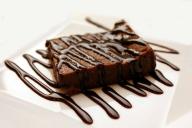Are you sure your favorite "healthy" snack is safe?
Recent nutritional research has revealed a shocking fact: fructose, which is found in trendy smoothies, energy bars, and even “diet” products, can trigger non-alcoholic fatty liver disease (NAFLD).
This diagnosis is given to every fourth adult, and the culprit is not alcohol or fast food, but an excess of sugars hidden under the label of “naturalness”.

Why aren't nutritionists sounding the alarm? The answer is simple: fructose is not dangerous in moderate doses, but modern foods are oversaturated with it.
For example, a glass of store-bought juice contains up to 30 g of fructose - this is twice the daily requirement.
The liver, processing such volumes, turns sugar into fat, which accumulates in its cells.
WHO experts recommend limiting added sugars to 25 g per day, but manufacturers disguise them under different names: agave syrup, molasses, “natural nectar”.
It's important to read labels, avoid ultra-processed foods, and not blindly trust brightly colored labels like "gluten-free" or "organic" — they don't guarantee liver safety.
Mistake #1: “Natural = healthy.”
Many people believe that the label "bio" or "eco" automatically makes the product safe. But fructose remains fructose, even if it is obtained from organic berries.
For example, popular “healthy” syrups (maple, Jerusalem artichoke) contain up to 80% fructose — more than regular sugar. A study in the Journal of Hepatology found that regular consumption of such products increases the risk of liver fibrosis by 45%.
Another myth is the benefits of honey. Yes, it contains antioxidants, but a teaspoon of honey is 4 g of fructose. If you add it to porridge, smoothies and tea, you can easily exceed the norm.
Mistake #2: “Juices cleanse the body.”
Fruit juice detox programs are a trap. A glass of apple juice contains 24 g of sugar (including 12 g of fructose), and orange juice contains 21 g. At the same time, the fiber that slows down the absorption of sugar is removed.
Scientists from Princeton University compared the effect of a whole apple and juice: blood glucose levels after juice jumped 2 times faster, which forced the liver to store fat more actively.
Mistake #3: “You can eat fruits without restrictions.”
Grapefruit or berries are safe in reasonable quantities, but the fruit snack craze has played a cruel joke. One large banana contains 7 g of fructose, a cup of grapes contains 12 g.
If you add smoothies and “healthy” bars to this, the liver gets a shock dose. Nutritionists advise limiting yourself to 2-3 servings of fruit per day and choosing those with less sugar: kiwi, avocado, raspberries.
Tip #1: Look for hidden sugars in sauces and processed foods.
Fructose isn't just hidden in sweets. Ketchup, pasta sauce, granola, ready-made soups, and even sausage often contain added sugars.
For example, a tablespoon of teriyaki sauce contains 4 grams of sugar. People who cook at home from whole foods consume 30% less sugar than those who eat processed foods.
Tip #2: Replace sweet drinks with herbal infusions.
Soda and juices are the main sources of fructose. But even the “diet” versions are dangerous: artificial sweeteners disrupt the gut microbiota, which increases liver inflammation, according to Nature.
An alternative is water with lemon, mint or cucumber, as well as chilled green tea without sugar.
Tip #3: Add chromium and zinc to your diet.
These microelements help the liver process sugar. Chromium is found in broccoli, eggs and nuts, zinc is found in pumpkin seeds and seafood.








